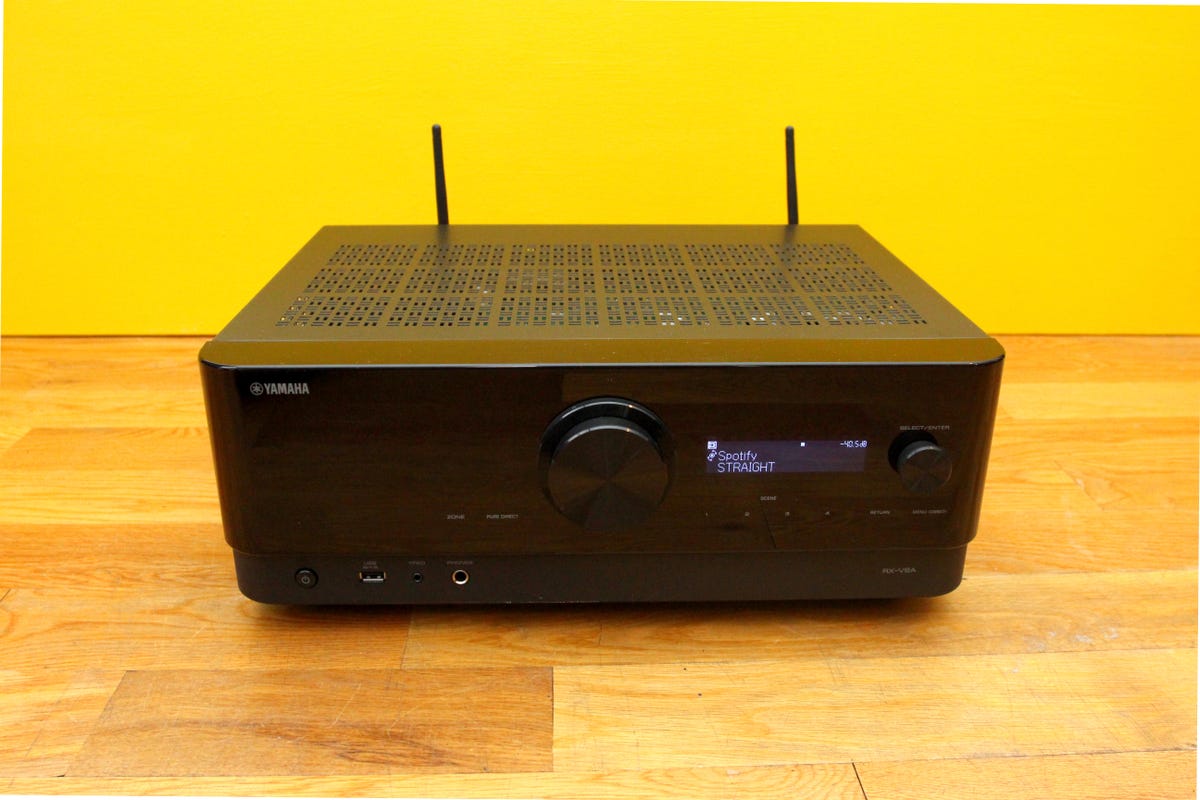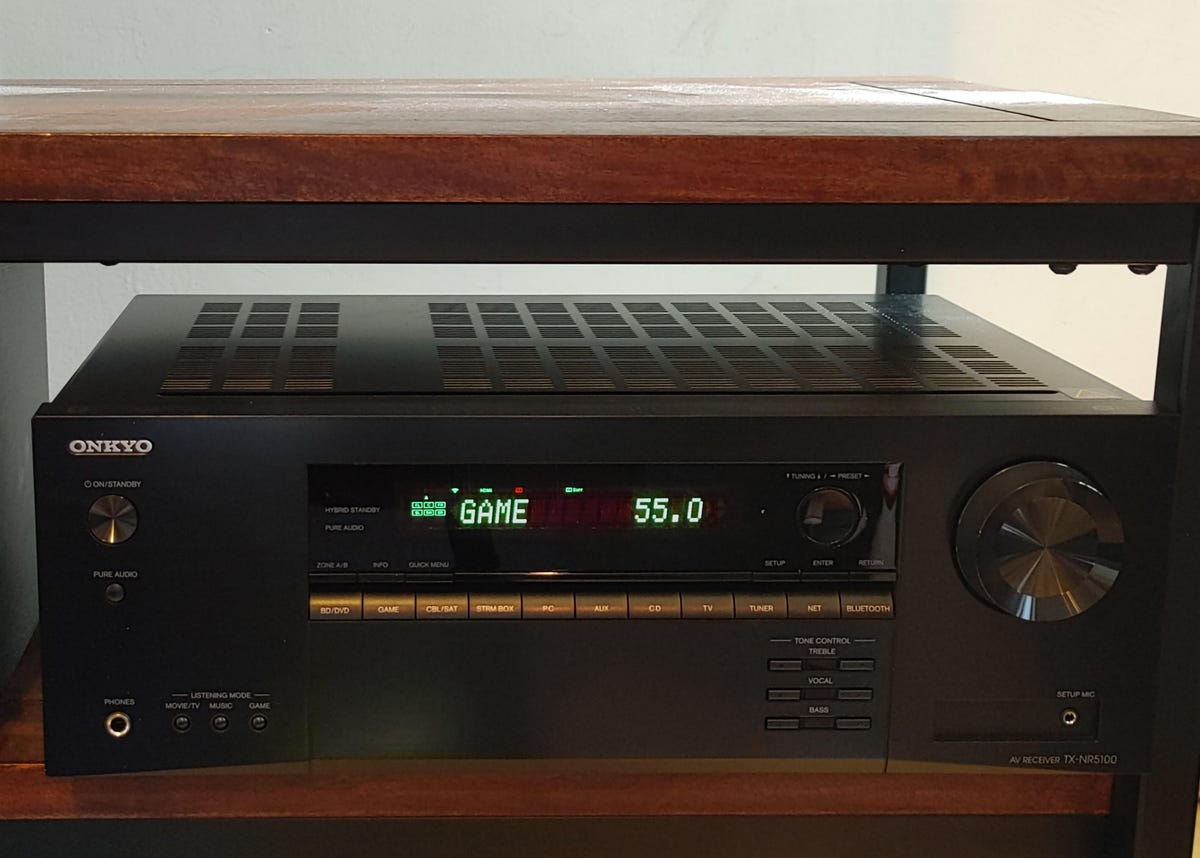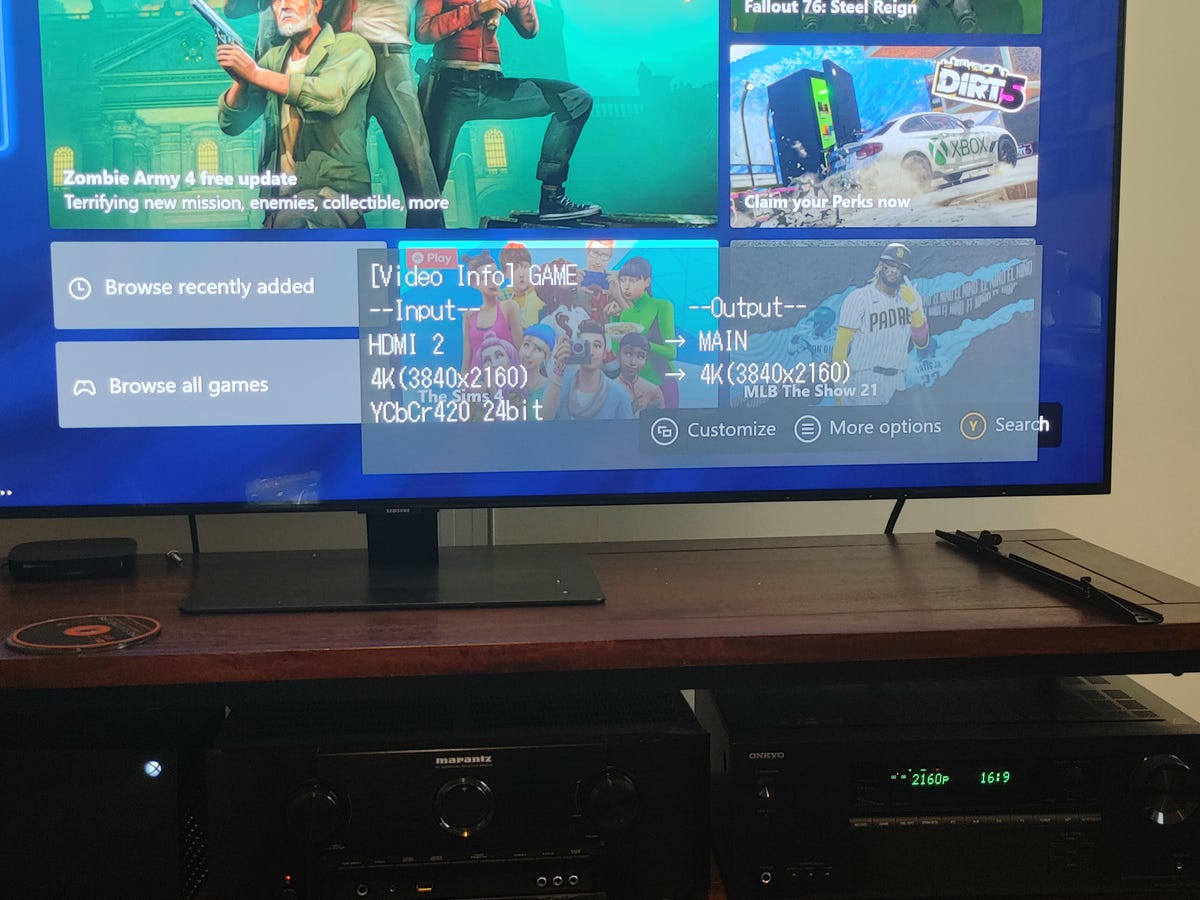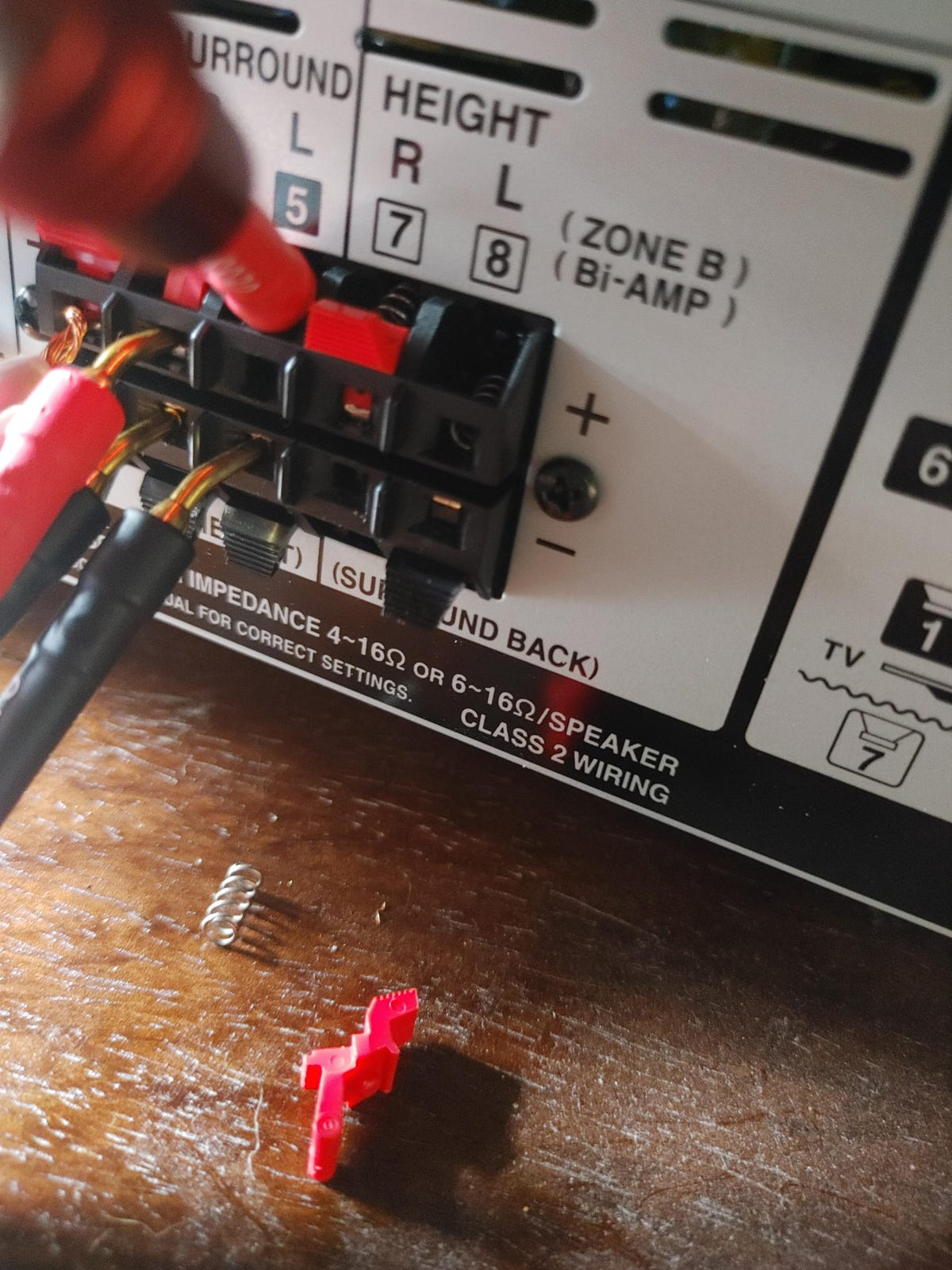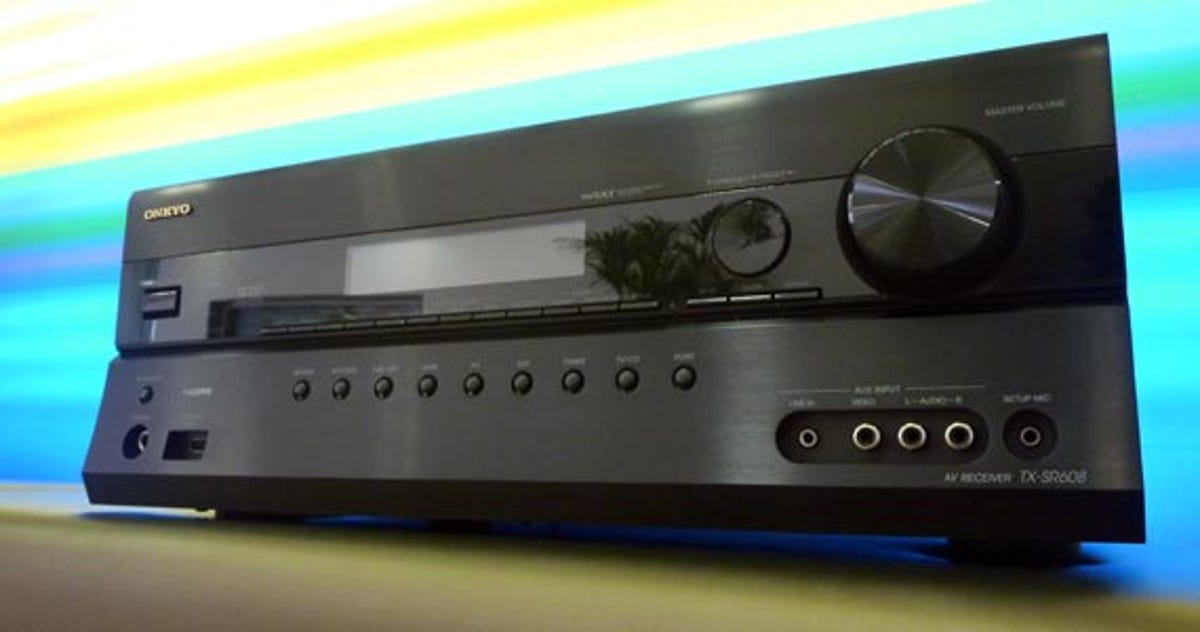Soundbars may be the more popular home theater option, but ask any enthusiast and they’ll tell you that an AV receiver the key to great movies (and music) in the home. These big black boxes look the same as ever on the outside, but their innards keep on evolving and picking up capabilities with every generation. The Onkyo TX-NR6100 is a superb example, with a full feature set and great sound today, as well as the capability to meet the changing needs of users in the near future.
After releasing the excellent TX-NR696 in 2019, Onkyo took a year off in 2020. Given how rocky the launch of pandemic-era 8K receivers was — most wouldn’t pass 4K/120Hz video from next-gen gaming consoles, for example — the company benefited from sitting out that terrible year. Yes, the new TX-NR6100 is compatible with 8K video and the output of the Xbox Series X (I tested it), but it’s able to offer so much more than simply switching video sources.

8.2
Onkyo TX-NR6100
$790 at Amazon
$800 at Best Buy
Get Price Alerts
$799 at Crutchfield
You’re receiving price alerts for Onkyo TX-NR6100
Like
- Best music streaming suite on the market
- Excellent home theater performance
- Fun to use
- Compatible with Xbox Series X/4K 120Hz signals
Don’t Like
- More expensive than the competition
- Not as dynamic with music
The 6100 takes up where the venerable TX-NR696 left off by adding its enhanced video compatibility to what was already a Pandora’s Box of features. Of course there is the bevy of music streaming options and even an input for a turntable. Though I was disappointed with the other Onkyo model released this year — the TX-NR5100, which cut too many features for the money — the TX-6100 is a giant step back in the right direction.
The Onkyo’s main “problem” is the price — at $800 it costs significantly more than its major competition. For instance, the $649 Yamaha RX-6VA is able to offer even more HDMI inputs and better performance by a pinch. However, if you want up-to-date streaming, excellent sound quality and “smarter” features, the Onkyo TX-NR6100 is worth the extra expense.
Features by the boatload
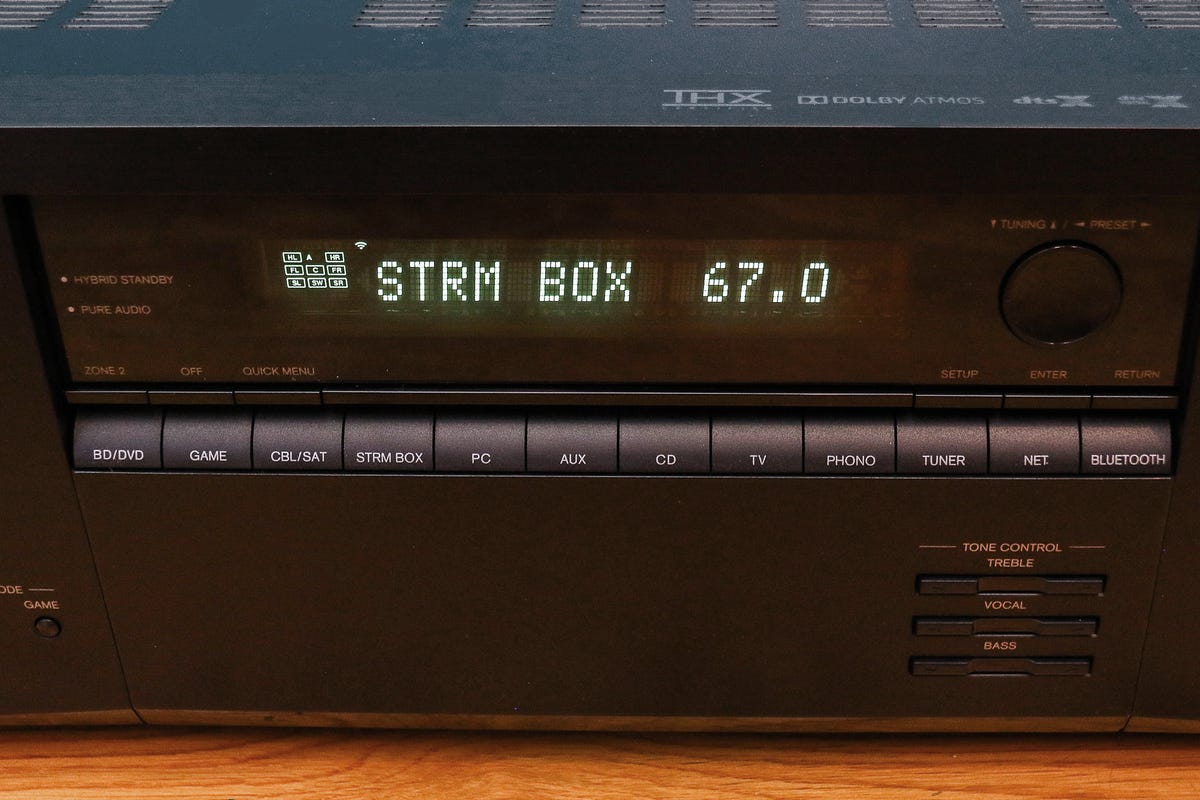
The front panel of the TX-NR6100 features direct source buttons
Sarah Tew/CNET
The TX-NR696 is a 7 x 100-watt-per-channel receiver which includes support for the atmospheric Dolby Atmos and DTS:X audio formats and the latest video standards, namely 8K and 4K/120Hz. While some competitors — Denon, Marantz and Yamaha — also offered 8K receivers they were plagued by compatibility problems until very recently. (Denon and Marantz have had updated models on the market since April, and Yamaha since the summer).
The Onkyo includes six HDMI inputs at the back, with three able to pass 8K video while the remaining three ports include HDR10 and Dolby Vision compatibility. There is a Zone 2 HDMI output as well. Other connections include five analog audio inputs, two digital audio inputs (optical and coaxial) and two USB ports. Vinyl is still in the middle of a revival and the NR6100 enables users to take advantage thanks to a dedicated phono input for turntables which lack an onboard phono preamp.
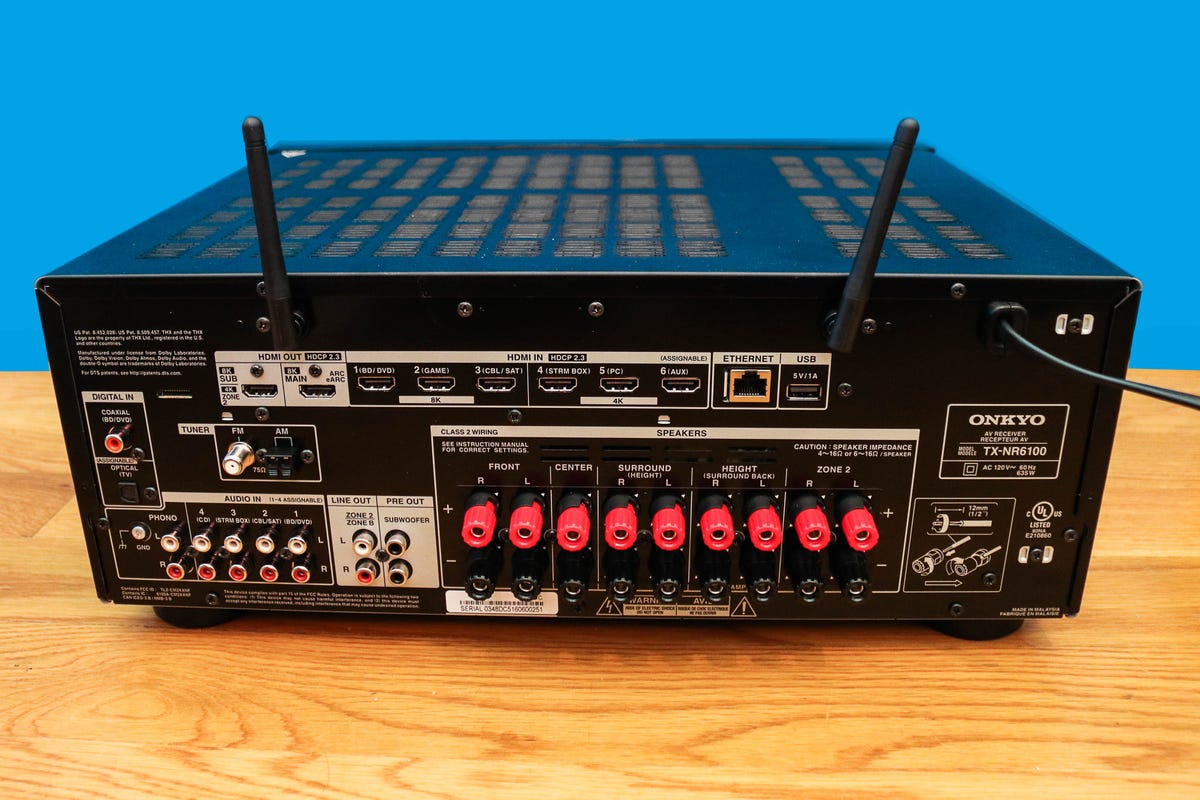

The rear panel of the TX-NR6100
Sarah Tew/CNET
The Onkyo’s bevy of streaming protocols includes Chromecast built-in, DTS Play-Fi, Spotify Connect, AirPlay and Bluetooth. Alongside Sony, Onkyo is the only other “major” receiver brand to offer integration with Google’s Chromecast built-in, and it’s one of my favorite streaming features. Being able to ask your Google Nest mini for a song and have it play automatically on your AV system is an excellent time-saver. If you have an Alexa household it will control the Onkyo too.
While the TX-NR696 had the proprietary FlareConnect system for “mirror casting” audio to another compatible component the feature is missing this time — no great loss. Though multiroom audio has pretty much negated the need for powered zones on receivers, the Onkyo still offers this functionality. The Onkyo includes a dedicated powered Zone 2 out (with HDMI) if you’re looking to set up another room with a set of speakers and a TV.
There’s a bunch of other features in there too — it can be controlled by the Sonos app if you connect the $449 Sonos Port, or you can optimize the receiver for certain Klipsch speakers.
Whether it’s the volume knob or the source selector I find myself often using the controls on an AV receiver instead of casting about for the remote. Receivers that use direct source buttons — such as the TX-NR6100 — instead of dials make it so much easier to get the input you want.
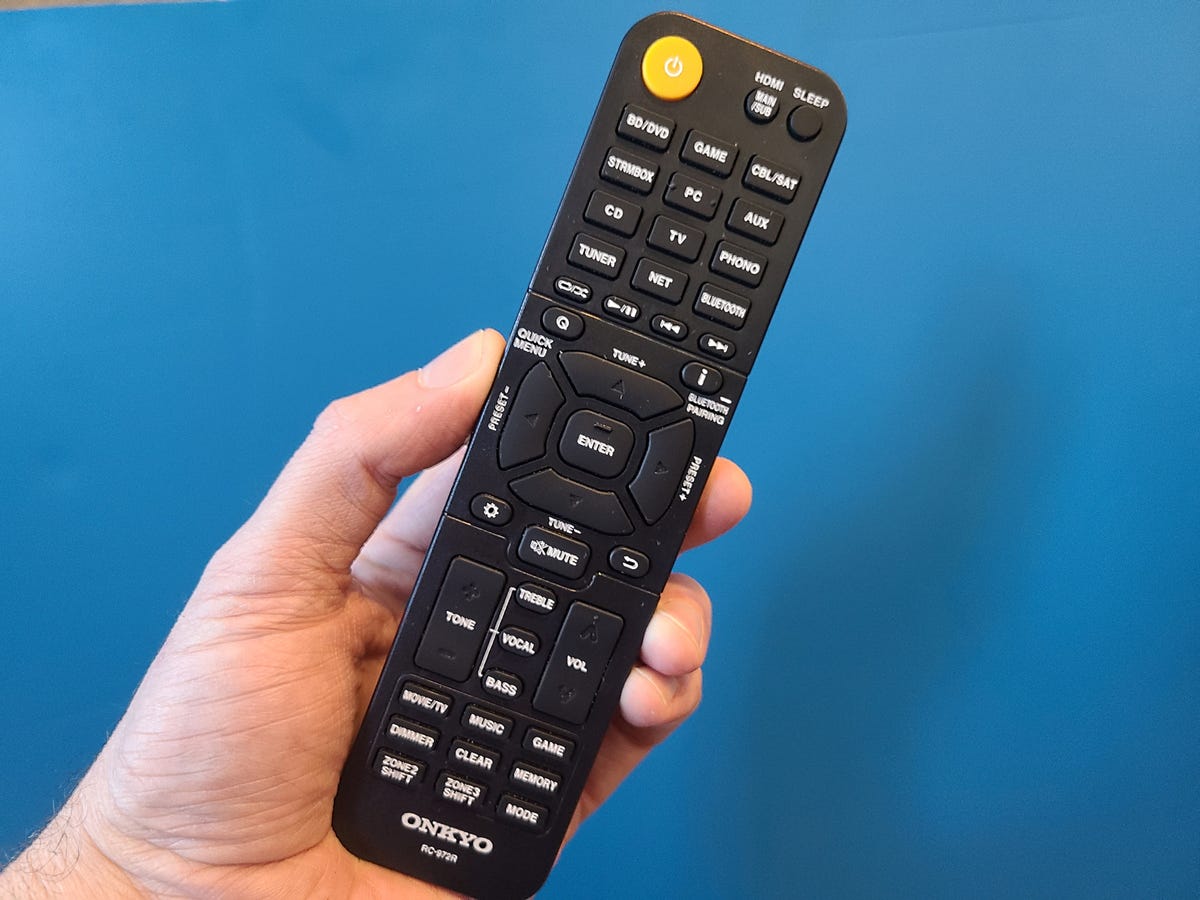

Ty Pendlebury/CNET
Of course you can always use the clicker, but the remote included with the 6100 and is not my favorite. It’s chunky but it feels slight in the hand, and the large tone rocker is unnecessary. The tone controls are also mirrored on the receiver itself.
How does it sound?
I tested the Onkyo TX-NR6100 with a speaker frontline consisting of Bowers and Wilkins 685, the new SVS Pro 1000 subwoofer and an Elac UC51 center. I compared it against the Yamaha RX-V6A with a mix of music, general TV watching and movies. I calibrated the models using a decibel meter rather using the receivers’ respective calibration routines.
Both the Yamaha RX-V6A and the Onkyo TX-NR6100 put in excellent performances and at times there was very little to separate them.
Blu-ray discs may be terribly out of fashion these days, but they are still the best way to experience your favorite movies. Though it’s not much of movie, 1917 on 4K Blu-ray is a tour de force in modern image making. The sequence which begins after the one hour mark — a beautiful tracking shot through a ruined city lit by flares — sounded intense and vivid when powered by the Yamaha. At 1.09.51 a flare began at the front right speaker and headed back over my head.
When replayed through the Onkyo the scene became a larger bubble of sound with all the clinks and random drips amplified, although the 6100 couldn’t track where the flares were going as easily as the Yamaha.
When confronted with the jungles of Pandora on the Avatar disc, there was very little to separate the two models. Each receiver was able to transport the listener to the nitrogen-rich atmosphere of Pandora. Insects hummed, Titanothere footsteps had the low thrum I expected and the spark of gunfire felt visceral on both run-throughs.
I switched to music and Ben Harper’s sparse and haunting Widow of a Living Man sounded equally impressive on both receivers. I gave the slight edge to Onkyo as it better delineated the difference between the guitar and voice.
Of all of the material I listened to, the biggest difference occurred with Nick Cave’s Red Right Hand. The Yamaha was able to produce an almost holographic image of the singer during this smoke-infused creeper, and the crashes and organ pulses were rendered more dynamic than on the Onkyo. The TX-NR6100 offset this relative lack of dynamics by amping up the atmosphere — the speakers seemed to wrap around me and the page turn at the start of the song seemed to come from outer space.
Should you buy it?
Receivers are just as competitive as they ever were, but Onkyo has come out strong with its TX-NR6100. The Onkyo supplies the power and performance you need at the center of a serious home theater. What the company offers over competitors such as Yamaha is more flexibility, especially if you use the Google Assistant and there’s 8K compatibility out of the box.
The Yamaha RX-V6a may not be as fully featured as the Onkyo but it offers better dynamics and a much better price, making it our choice between the two. Yet, if the price on the Yamaha RX-V6A changes due to supply chain issues that would close the gap. The only other competitor at this level (besides Denon) is Sony, but the STR-DN1080 has often been out of stock recently, and might as well be discontinued. Between the two, the TX-NR6100 adds meaningful updates on that old-timer and should be the one you choose.





